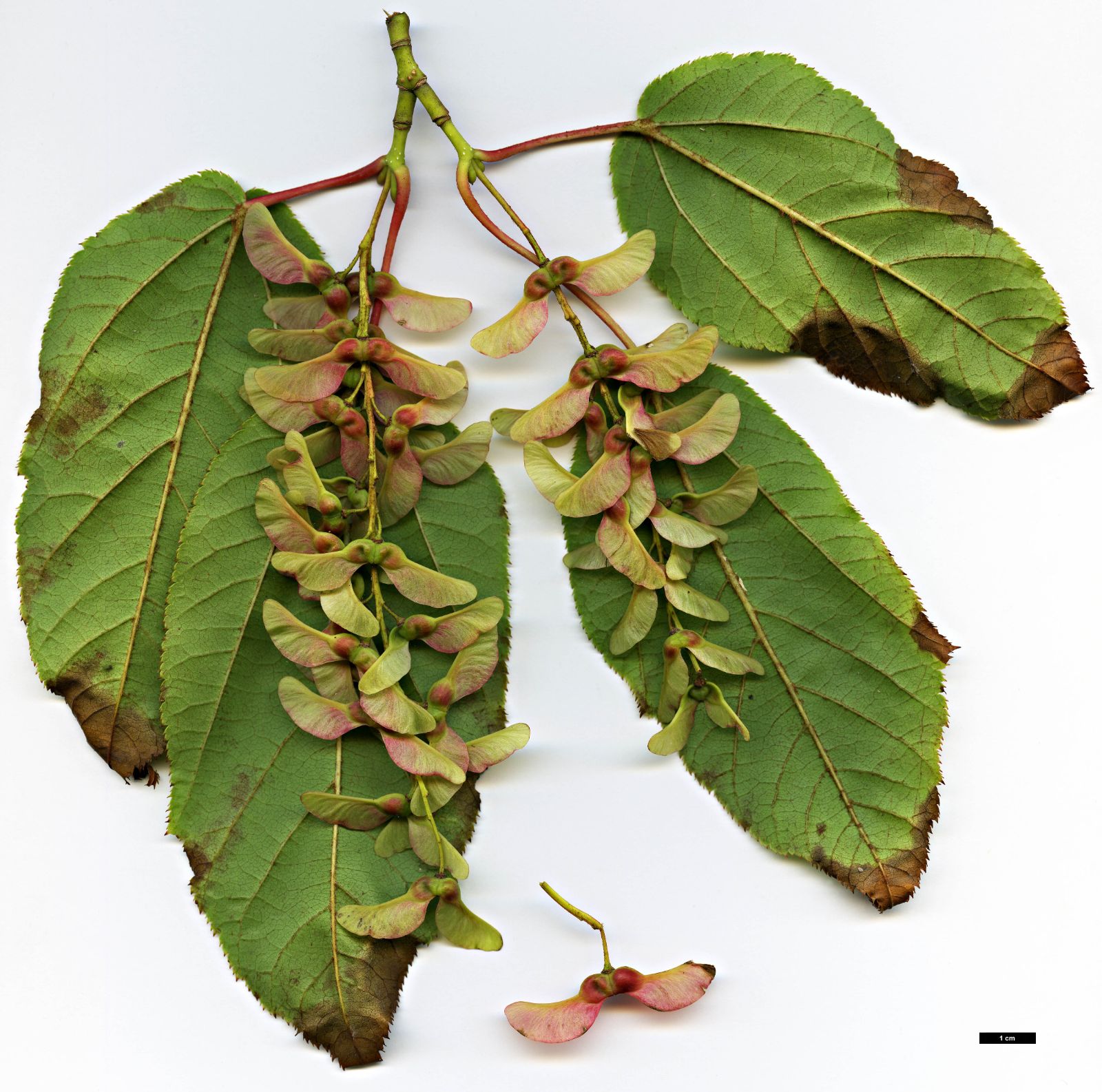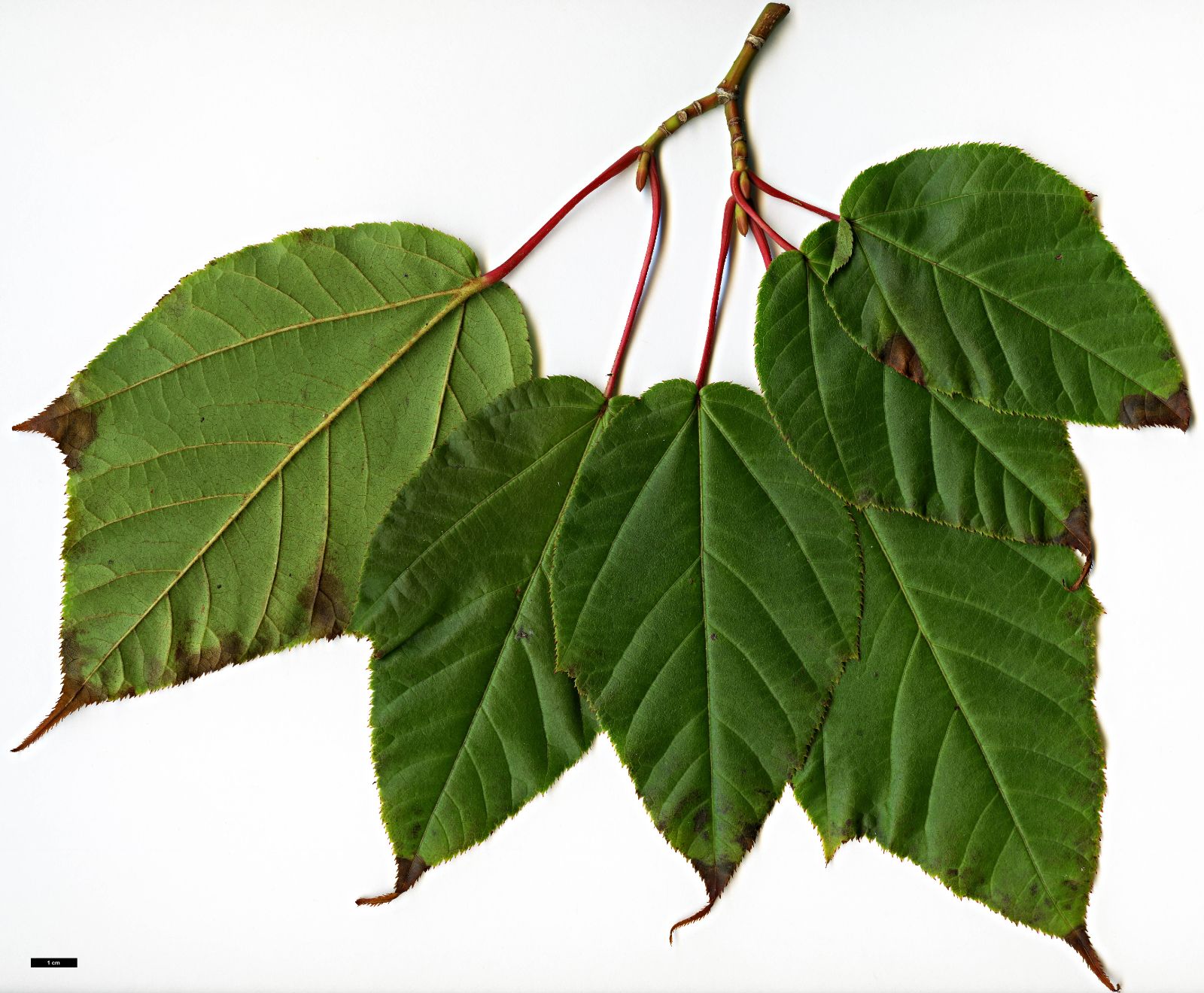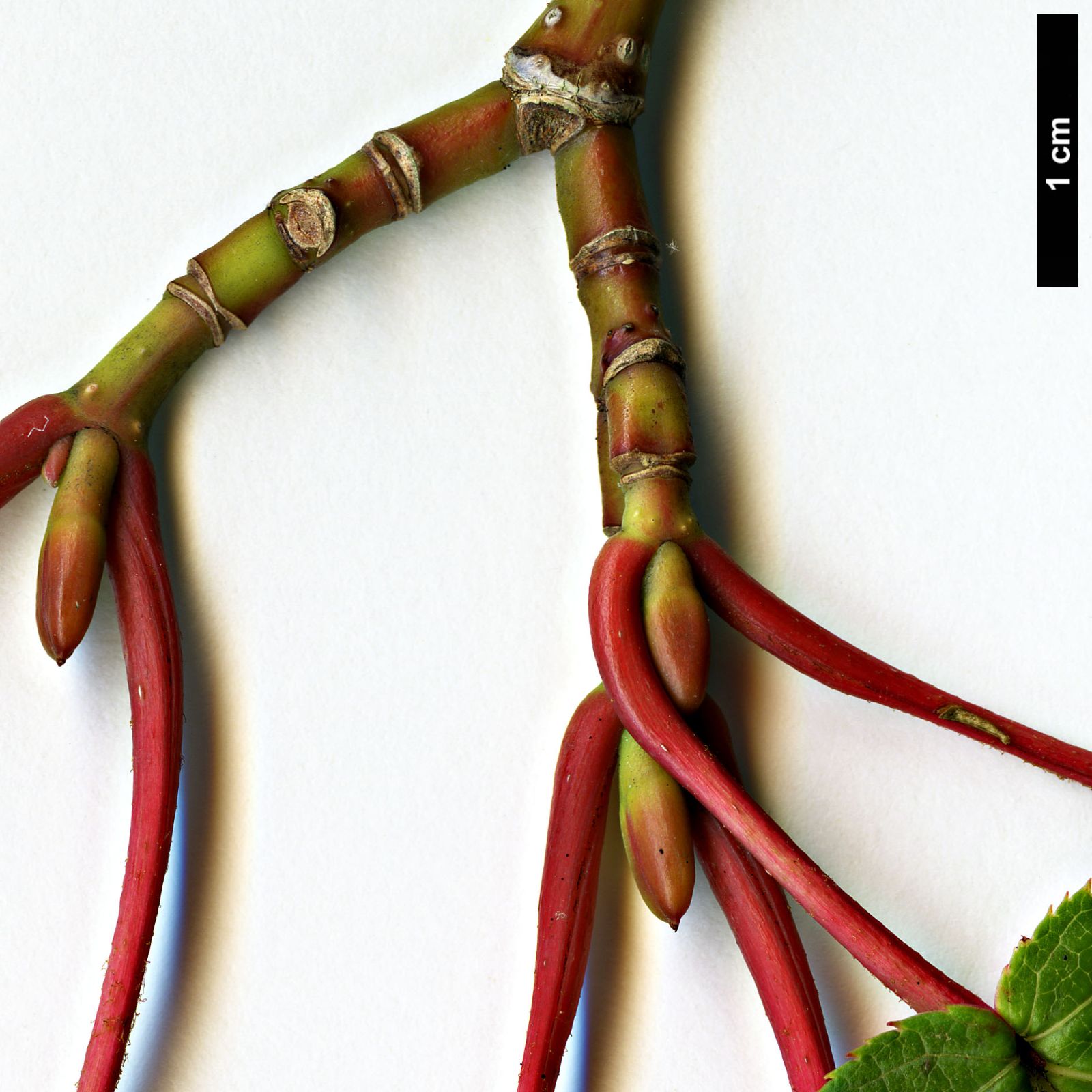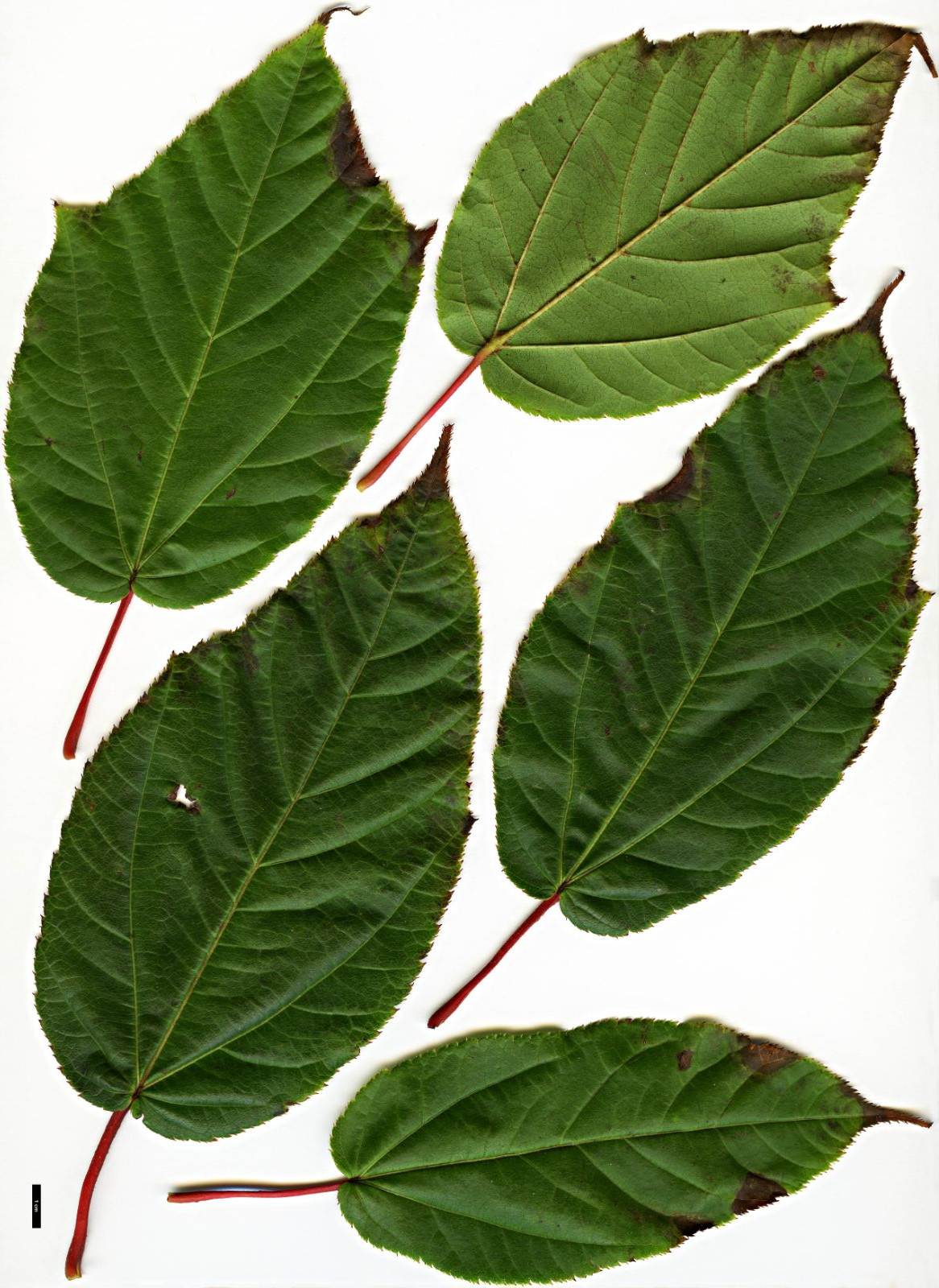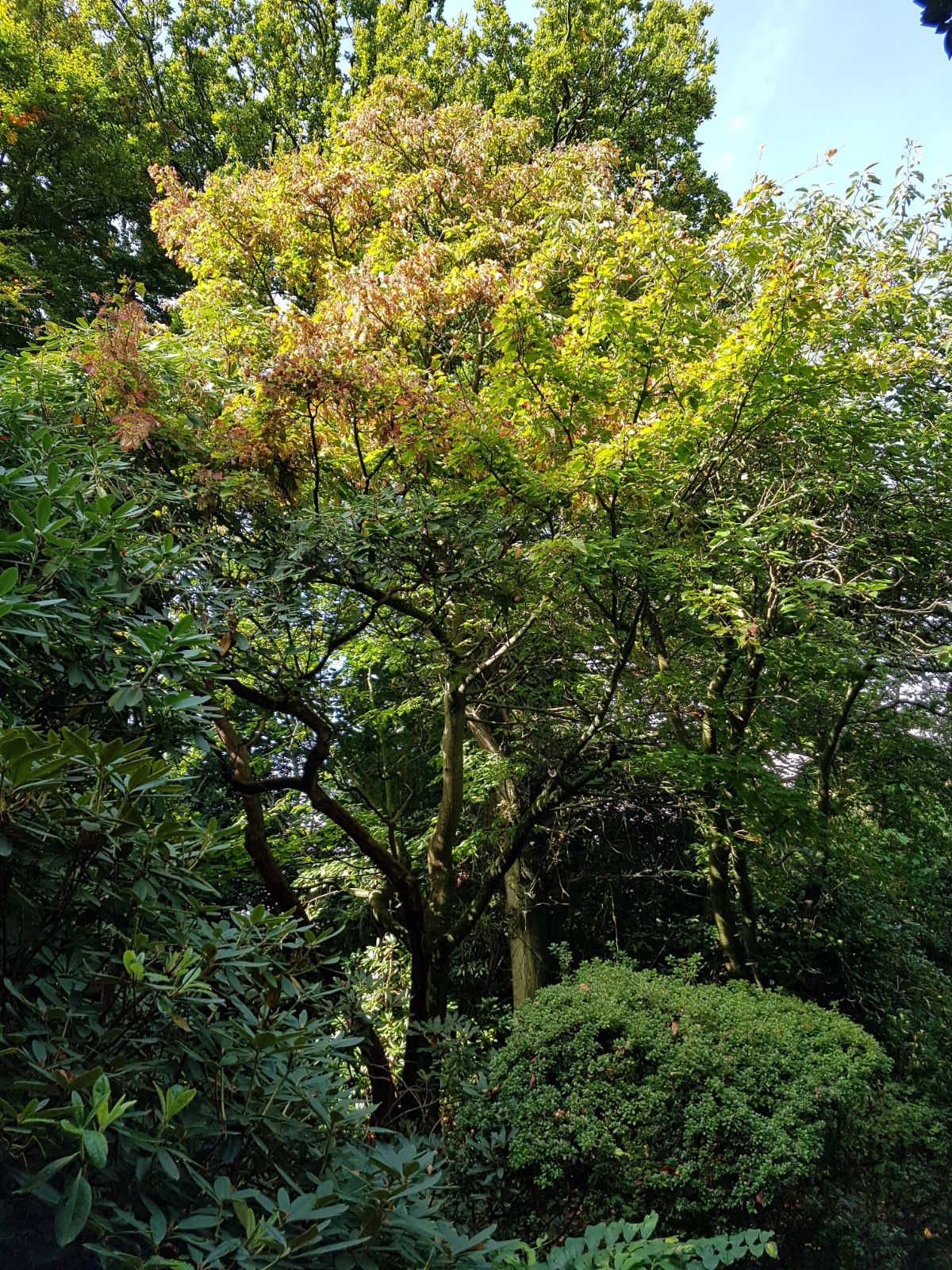Acer chienii
Sponsor
Kindly sponsored by
Lawrence Banks
Credits
Dan Crowley (2020)
Recommended citation
Crowley, D. (2020), 'Acer chienii ' from the website Trees and Shrubs Online (treesandshrubsonline.
Genus
- Acer
- Sect. Macrantha
Synonyms
- Acer tegmentosum Maximowicz f. rufinerve A. E. Murray
Other taxa in genus
- Acer acuminatum
- Acer amplum
- Acer argutum
- Acer barbinerve
- Acer buergerianum
- Acer caesium
- Acer calcaratum
- Acer campbellii
- Acer campestre
- Acer 'Candy Stripe'
- Acer capillipes
- Acer cappadocicum
- Acer carpinifolium
- Acer 'Cascade'
- Acer caudatum
- Acer ceriferum
- Acer chapaense
- Acer circinatum
- Acer cissifolium
- Acer × conspicuum
- Acer cordatum
- Acer coriaceifolium
- Acer × coriaceum
- Acer crataegifolium
- Acer davidii
- Acer diabolicum
- Acer distylum
- Acer divergens
- Acer duplicatoserratum
- Acer elegantulum
- Acer erianthum
- Acer 'Esk Flamingo'
- Acer fargesii
- Acer fenzelianum
- Acer flabellatum
- Acer forrestii
- Acer franchetii
- Acer × freemanii
- Acer fulvescens
- Acer 'Gimborn'
- Acer ginnala
- Acer glabrum
- Acer 'Gold Coin'
- Acer granatense
- Acer grandidentatum
- Acer griseum
- Acer heldreichii
- Acer henryi
- Acer × hillieri
- Acer hookeri
- Acer hyrcanum
- Acer japonicum
- Acer kawakamii
- Acer komarovii
- Acer laevigatum
- Acer laurinum
- Acer laxiflorum
- Acer lobelii
- Acer longipes
- Acer macrophyllum
- Acer mandshuricum
- Acer maximowiczianum
- Acer maximowiczii
- Acer metcalfii
- Acer miaotaiense
- Acer micranthum
- Acer 'Mindavi'
- Acer 'Minorient'
- Acer miyabei
- Acer miyabei × campestre
- Acer monspessulanum
- Acer morifolium
- Acer 'Mozart'
- Acer oblongum
- Acer obtusifolium
- Acer okamotoanum
- Acer oliverianum
- Acer opalus
- Acer orientale
- Acer palmatum
- Acer papilio
- Acer pauciflorum
- Acer pectinatum
- Acer pensylvanicum
- Acer pentaphyllum
- Acer pentapotamicum
- Acer pictum
- Acer pilosum
- Acer pinnatinervium
- Acer platanoides
- Acer platanoides × amplum
- Acer platanoides × truncatum
- Acer × pseudoheldreichii
- Acer pseudoplatanus
- Acer pseudosieboldianum
- Acer pubinerve
- Acer pycnanthum
- Acer rubescens
- Acer rubrum
- Acer rufinerve
- Acer saccharinum
- Acer saccharum
- Acer sempervirens
- Acer 'Serpentine'
- Acer serrulatum
- Acer shenkanense
- Acer sieboldianum
- Acer sikkimense
- Acer 'Silver Cardinal'
- Acer 'Silver Ghost'
- Acer sinense
- Acer sinopurpurascens
- Acer spicatum
- Acer stachyophyllum
- Acer taronense
- Acer tataricum
- Acer tegmentosum
- Acer tenellum
- Acer tetramerum
- Acer tibetense
- Acer tonkinense
- Acer triflorum
- Acer truncatum
- Acer tschonoskii
- Acer turkestanicum
- Acer tutcheri
- Acer ukurunduense
- Acer velutinum
- Acer wardii
- Acer 'White Tigress'
- Acer wilsonii
- Acer × zoeschense
A deciduous tree up to 17 m in its native habitat. Bark smooth, green at first, with scattered lenticels, soon turning brown with age. Branchlets glabrous, green to purplish; buds stipitate, with 2 valvate scales, glabrous, ovate with obtuse apices. Leaves ovate to ovate-oblong, to 13 × 10 cm, unlobed to 3-lobed; base subcordate; lateral lobes, where present, short ovate, apices acute, lobes developing from apical half of lamina; terminal lobe broadly ovate, with an acuminate apex; upper surface bright green, lower surface pale green, with rusty pubescence along primary and secondary veins and lateral veins each side of the midrib, margins doubly serrulate; petiole 3–5 cm long, glabrous or pubescent. Flowers held densely on racemose inflorescences, 6–11 cm long, with 30–40 flowers per inflorescence. Pedicels slender, ~0.4 cm long. Flowers 5-merous; sepals oblong, petals obovate, stamens 8, inserted outside the nectar disc, glabrous. Fruits with wings narrowly spreading, 1.4–1.8 cm long. Flowering from April to May, fruiting from August to October (China). (Xu et al. 2008).
Distribution Myanmar China north western Yunnan India
Habitat Mixed forests between 2200 and 3100 m asl.
USDA Hardiness Zone 8-9
RHS Hardiness Rating H4
Conservation status Least concern (LC)
A lesser known snakebark, Acer chienii is currently restricted to specialist collections. The UK and Ireland Champion grows at Tregrehan, Cornwall, and measured 5 m tall with a dbh of 13 cm in 2014, having been planted in 2002 (The Tree Register 2019). Typical examples of the species here have broadly spreading crowns with arching branches. The species was also grown at the David C. Lam Asian Garden, Vancouver, though not successfully, as the sole plant never established and succumbed in the summer of 2019 (D. Justice, pers. comm. 2019).
The taxonomic status of the species has been somewhat debated, with it treated as a synonym of Acer pectinatum subsp. taronense by van Gelderen et al. (1994), with this treatment also preferred by one of the authors in the account or the species for the Flora of China (Xu et al. 2008). However, it appears distinct from this taxon in its unlobed to three-lobed leaves, with lobes that are developed in the upper half of the lamina. Plants in cultivation also have more leathery textured leaves than those of both typical A. pectinatum and in its subsp. taronense, and lack pubescent petioles. It does however share the characters of Acer pectinatum subsp. pectinatum and subsp. taronense in its pubescent lower leaf surfaces and bark that soon turns brown.
Aside from any dispute with Acer pectinatum subsp. taronense, A. chienii ought not to be confused with any other snakebark maple. In the absence of lobed leaves, described as ‘tulip shaped’ by Xu et al. (2008), its doubly serrulate margins distinguish it easily from A. davidii, while its slender pedicels and leaf coloration separate it from A. sikkimense var. serrulatum. Listed as endemic to northwestern Yunnan by Xu et al. (2008), the species is also known from NE India and Myanmar (Barstow, Crowley & Rivers 2019).

